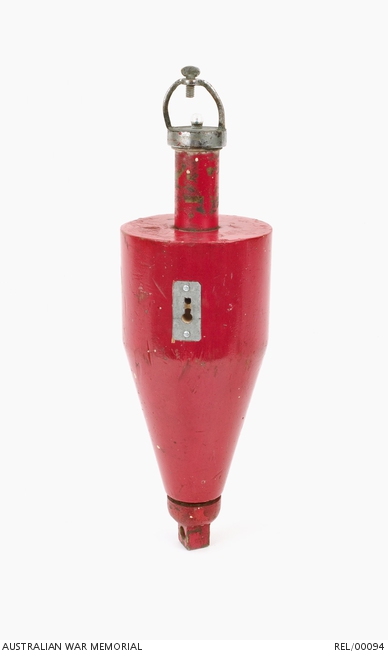The sinking of the Centaur
This year marks the 80th anniversary of the sinking of the 2/3rd Australian Hospital Ship (AHS) Centaur. On 14 May 1943 Centaur was en route from Sydney to Cairns when she was sunk by a Japanese submarine south of Moreton Island, off the Queensland coast. From the 332 people on board, only 64 survived.
Centaur was a merchant vessel built in Scotland on the Clyde River, and was launched in 1924. She could carry a mixed cargo of passengers and freight, and was employed on a run between Fremantle, Western Australia, and Singapore. When the war began in September 1939, she was placed under the government's control. In November 1941 Centaur was one of the ships used in the search for HMAS Sydney, and found a lifeboat with survivors from the German raider Kormoran. Among the Germans rescued was the Kormoran's captain, Fregattenkapitdn Theodor Detmers.
Following Japan's entry into the war and the subsequent bloody fighting in Papua during 1942, Centaur was converted into a hospital ship with the aim of ferrying patients between Port Moresby and Townsville. Her conversion began in January 1943 and was completed two months later.
Now the 2/3rd AHS Centaur, the vessel had a fully equipped operating theatre and dental surgery, and could carry 252 patients. She was also clearly marked as a hospital ship. Around her freshly painted white hull a thick green band ran, broken in several places by large red crosses. At night, the vessel was brightly illuminated by powerful spotlights.
Centaur kept her civilian crew, but her medical staff were all members of the army. The men were from the Australian Army Medical Corps and the women were from the Australian Army Nursing Service. Centaur only completed two voyages with patients, before she began her ill-fated third and final voyage.
A unit banner for the 2/12 Australian Field Ambulance. Only fourteen of the two hundred 2/12 AFA personnel aboard Centaur survived the sinking.
In the early afternoon of 12 May Centaur steamed from Sydney for Cairns carrying members of the 2/12th Field Ambulance. Shortly after 4 am on 14 May, while most people were asleep, a torpedo struck Centaur's port side, hitting the oil fuel tank which ignited in a massive explosion. The bridge superstructure collapsed and the funnel crashed onto the deck. Everything was covered with burning oil and a fire quickly began to roar across the ship. Water, meanwhile, rushed in through the gaping hole in her side. Many of those onboard not killed in the explosion or fire, were trapped as the ship started to go down bow first, and then broke in two. In just three minutes Centaur was gone.
The survivors were at sea for a day and half before they were rescued. The ship's crew and medical staff suffered heavily, as did the 2/12th Field Ambulance -178 men, from a total of 193, died. It was the nurses though, who suffered the worst. Of the 12 nurses onboard only one, Sister Nell Savage, survived.
Nursing Sister Ellen Savage, only surviving woman of the sinking of the Centaur, taken some months after the incident. Goulburn, NSW 1943.
Although badly hurt herself, Sister Savage concealed her injures and gave what help she could to the other survivors. After sharks circled their raft, and when ships and planes passed without seeing them, a sing-along was organised to help keep up their spirits. For her "conspicuous gallantry" Sister Savage was awarded a George Medal.
This artwork depicts the Hospital ship, 'Centaur' being attacked by the Japanese off the coast of Queensland, during the Second World War. Bob Whitmore, Work, Save, Fight and so Avenge the Nurses!, c1943-1945
The loss of the Centaur deeply shocked Australia, and for many Australians she became a symbol of the determination to win the war. The attack on a clearly marked and illuminated hospital ship was taken as further proof that Australia was fighting against a brutal enemy.
Survivors of hospital ship Centaur tell of ordeal, F00734
Survivors of the hospital ship Centaur which was torpedoed about fifty miles north-east of Brisbane, tell of their harrowing experience. Survivor Chief Pantryman Ronald G (Ron) Moate comes back to his loved ones. Survivors Thomas Clark (Tom) Hegarty, Frederick (Fred) Chidgey and Third Mate Ernest (Monty) Banks, speak to camera. Sister Ellen Savage, the heroine of the sinking, is interviewed from her hospital bed. See collection item. Credit: Cinesound Movietone Productions
Centaur found
Since the end of the war, many people have pushed to locate Centaur as a way of providing some solace to those family and friends who had lost loved ones, and to possibly answer some the unresolved questions surrounding its sinking.
A search led by David Mearns, who had previously lead the team that found the wrecks of HMAS Sydney and HSK Kormoran, discovered Centaur’s wreck on 20 December 2009. Centaur was located about 30 nautical miles off the southern tip of Moreton Island, off Queensland’s south-east coast.
The wreck was in one piece although it appears as though the hull broke in at least one, and maybe two, places. Centaur’s approximate position is 27˚ 16.98’S, 153˚ 59.22’E at a depth of over 2,000 metres. The ship’s location is less than 1 nautical mile (1.85 kilometres) from that calculated by the navigator, 2nd Mate Gordon Rippon, who was on the bridge taking regular bearings the night Centaur was torpedoed.
Now that the wreck is found, it will be protected by the Australian government’s Historic Shipwrecks Act 1976. The site will therefore become a memorial to the lives that were lost.
Items from the Collection
The Memorial holds a small, but important, collection associated with the sinking of the Hospital Ship Centaur, whose wreck site was discovered in December 2009.










